Hawaii is one of the most beautiful and laid-back places to live in the United States. It has humid tropical weather year-round, lush scenery, and warm waters. Hawaii also has diverse plant and animal life with several ecological zones, including forests, sea coasts, and rain forests. Many animals thrive in its tropical atmosphere, including some of the fastest species on our planet. Here are some of Hawaii’s fastest animals.
Hawaiian Hawk

The Hawaiian
hawk’s
average “cruising speed” hovers around 50 mph.
©iStock.com/Henk Bogaard
The Hawaiian hawk, or ‘io, is a bird of prey native to Hawaii and seen as royalty in Hawaiian culture. It is the only resident hawk in the state and resides on all islands, where it inhabits tropical forests and agricultural areas. These raptors feed on rodents and birds by diving through the air and grabbing their target. These dive attacks require exceptional speed, which they receive from their broad wings and gravity, reaching over 100 miles per hour. Their average “cruising speed” hovers around 50 mph, still faster than most creatures on our planet.
Blue Shark
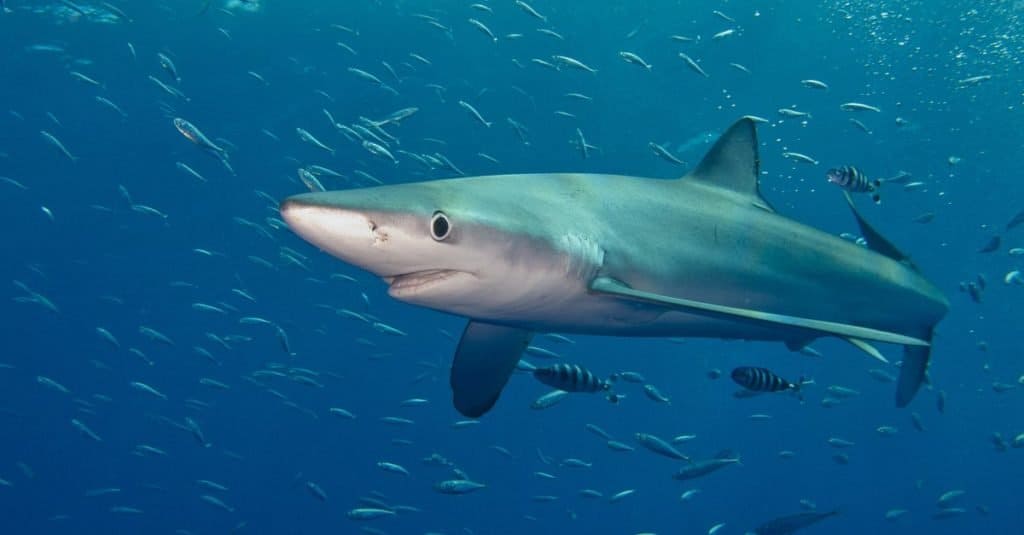
Blue sharks
can travel at an average speed of 43 miles per hour, making them one of the fastest sharks in the ocean.
©Anna L. e Marina Durante/Shutterstock.com
Great blue sharks are curious requiem sharks that inhabit deep waters in the world’s temperate and tropical oceans. This species resides near the shore around the Hawaiian islands, but you may also find them further in deep water. They can travel at an average speed of 43 miles per hour, making them one of the fastest sharks in the ocean. Their elongated caudal fins give them immense swimming power as their tail fins move from side to side. They have long, sleek bodies that can move fast enough to keep up with speedy prey like squid and schooling fish. And like other sharks, they can leap eight to ten feet out of the water.
Wallaby
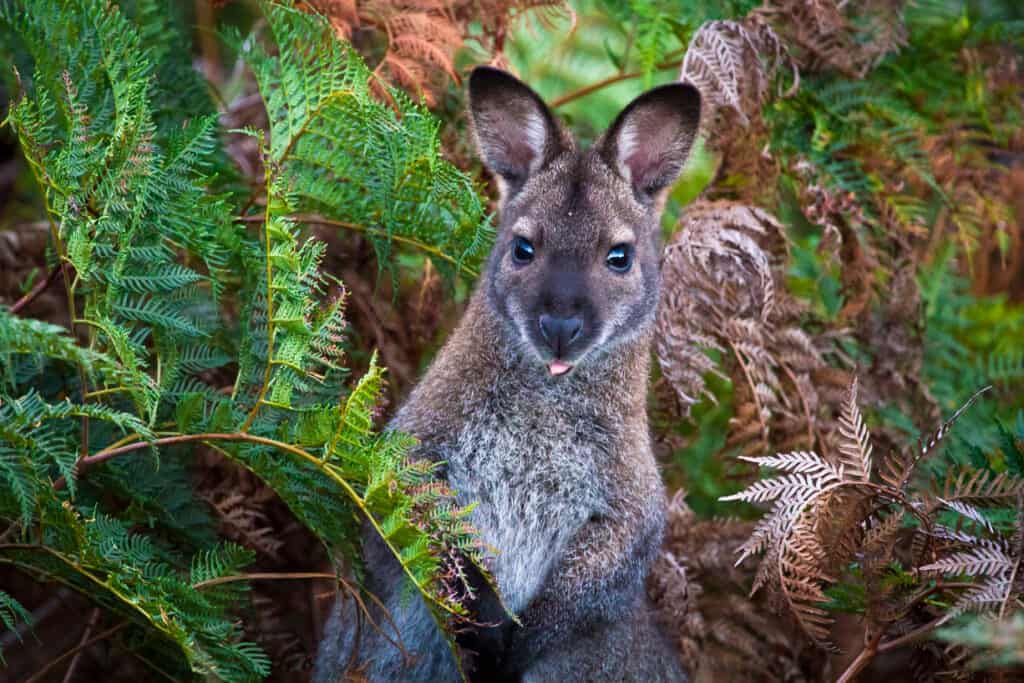
The
wallaby
can travel up to 30 miles per hour.
©Kevin Wells Photography/Shutterstock.com
The wallaby is a small macropod native to Australia and New Guinea. However, there is a small population in Hawaii’s Kalihi Valley. A pair of wallabies escaped a private zoo during the early 1900s and reproduced, forming a group of around 40 to flourish in the tropical valley. These small marsupials can travel up to 30 miles per hour. But their primary mode of transportation is hopping approximately nine to 15 mph. They use their powerful hind legs to jump at high speeds, leaping up to six feet in the air.
Tuna
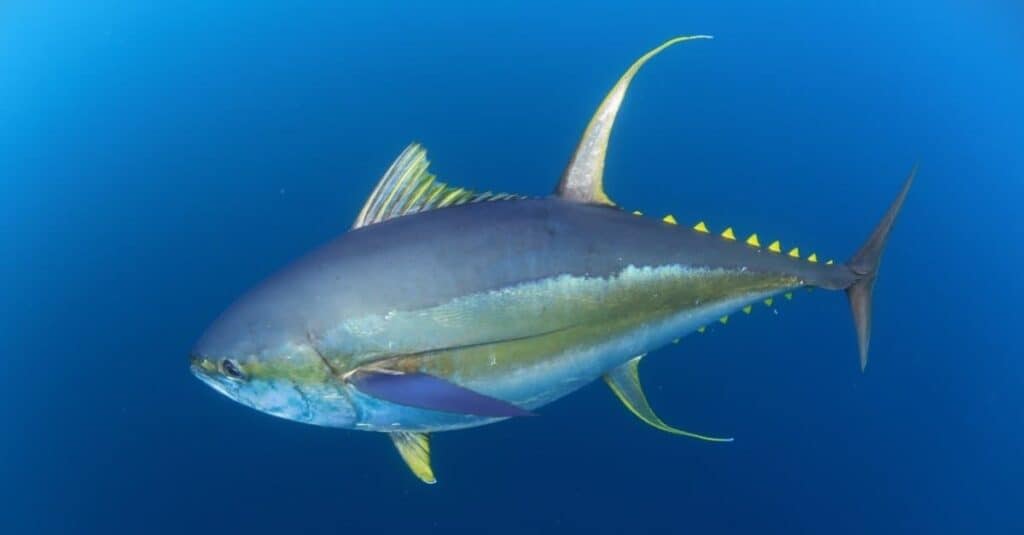
The
yellowfin tuna
is reported as the fastest species, clocking in at 46 miles per hour.
©Al McGlashan/Shutterstock.com
Tunas are saltwater fish found throughout the world’s oceans, and Hawaii has four species: albacore, bigeye, skipjack, and yellowfin. The tuna is copious throughout the island’s waters, some swimming closer to shore while others head out to deeper water. The yellowfin tuna is reported as the fastest species, clocking in at 46 miles per hour. These fish have well-developed skeletal muscles that allow them to quickly push through the water’s resistance, and their torpedo-shaped bodies streamline their movements. They also have varying small fins near the tapered region behind their dorsal fin, further eliminating drag.
Bonefish
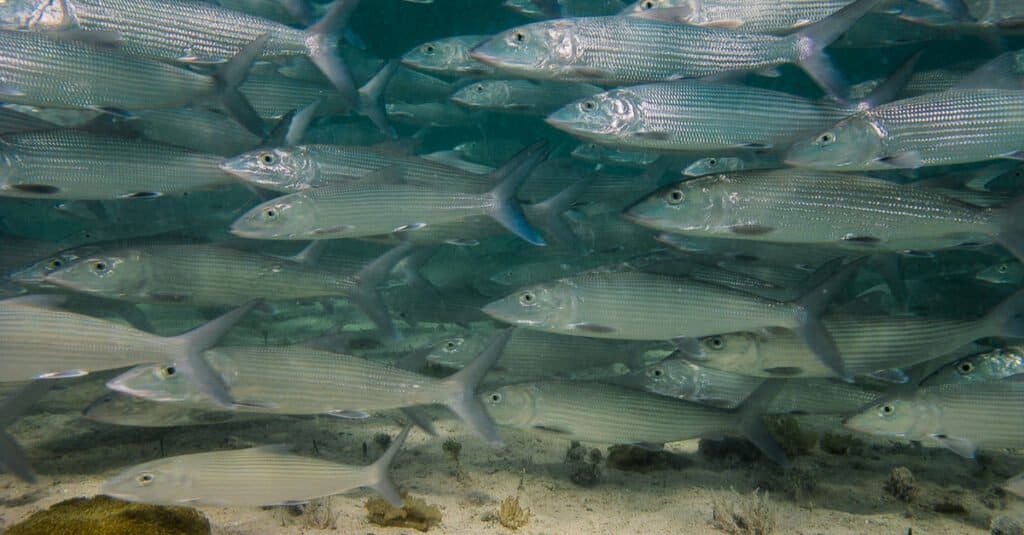
Named for the many delicate bones in their body, bonefish are built for speed and can reach 40 miles per hour.
©Leonardo Gonzalez/Shutterstock.com
The bonefish is a popular marine game fish inhabiting tropical and temperate waters around the world. The best place to catch or see a bonefish in Hawaii is near the island of Oahu; the flats harbor some of the largest bonefish in the world (the largest on record is three feet long). Named for the many delicate bones in their body, they are built for speed and can reach 40 miles per hour. Speed is their primary defense source; they use their swiftness to escape predators like sharks and barracudas. They have elongated torpedo-shaped bodies that can easily maneuver through the water, even breaking away from their school if need be.
Hawaiian Goose

The nene has the smallest range of any living
goose
but will fly across islands, reaching up to 40 miles per hour.
©Christian Weber/Shutterstock.com
The Hawaiian goose, also known as the nene, is the official state bird of Hawaii and endemic to the state. It lives in the wild on several Hawaiian islands and inhabits areas around volcanoes. They have the smallest range of any living goose but will fly across islands, reaching up to 40 miles per hour. However, they don’t fly as fast as other geese and spend most of their time on the ground. When they do fly, they stay low to the ground, some even colliding with cars. Unlike eagles, who glide through the air, these birds use powerful wingbeats to propel them during flight.
Gecko
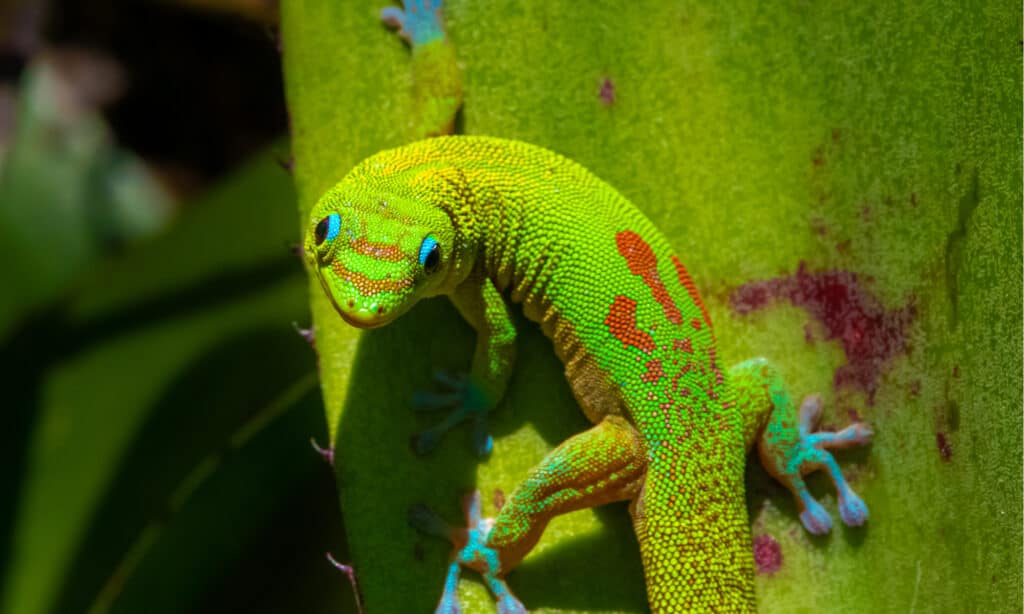
Geckos
can cover three feet per second and are known for quickly climbing vertical surfaces.
©Phillip B. Espinasse/Shutterstock.com
Geckos are small carnivorous lizards found on every continent except for Antarctica. There are eight gecko species in Hawaii, which are very common across the islands. You will often find them scurrying across the pavement or clinging to trees as you walk past. You wouldn’t think such a tiny creature could be so fast, but these lizards can run 30 miles per hour. They can cover three feet per second and are known for quickly climbing vertical surfaces. Some species can even run on water!
Up Next:
- Discover the Fastest Animals in Alaska
- Top 8 Fastest Water Animals
- Discover the Fastest Animals in North Dakota
The photo featured at the top of this post is © Agami Photo Agency/Shutterstock.com
Thank you for reading! Have some feedback for us? Contact the AZ Animals editorial team.






